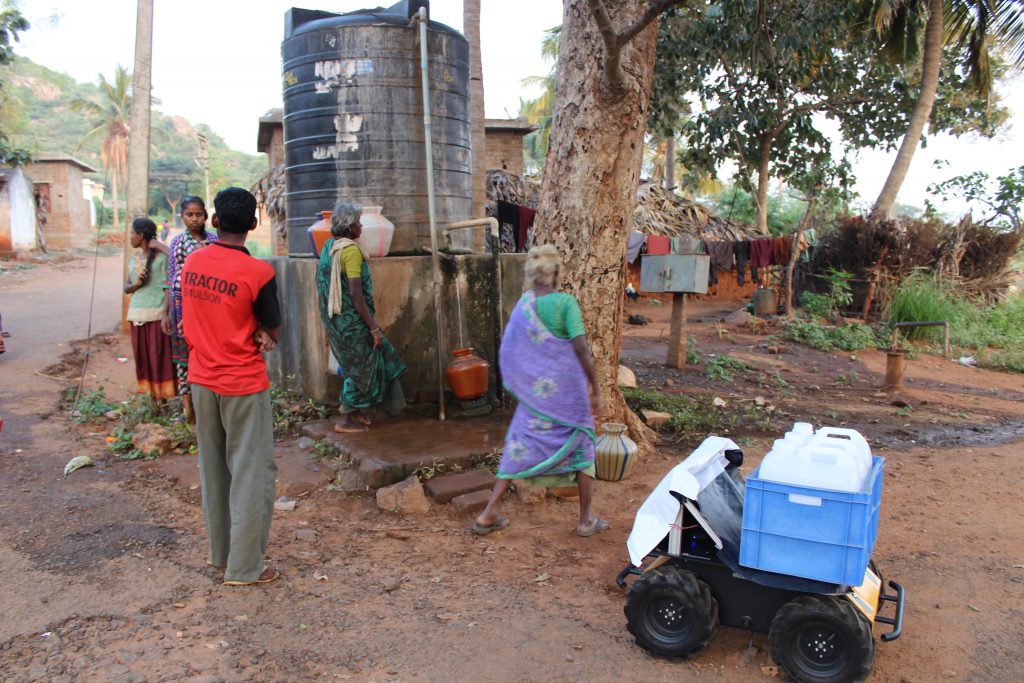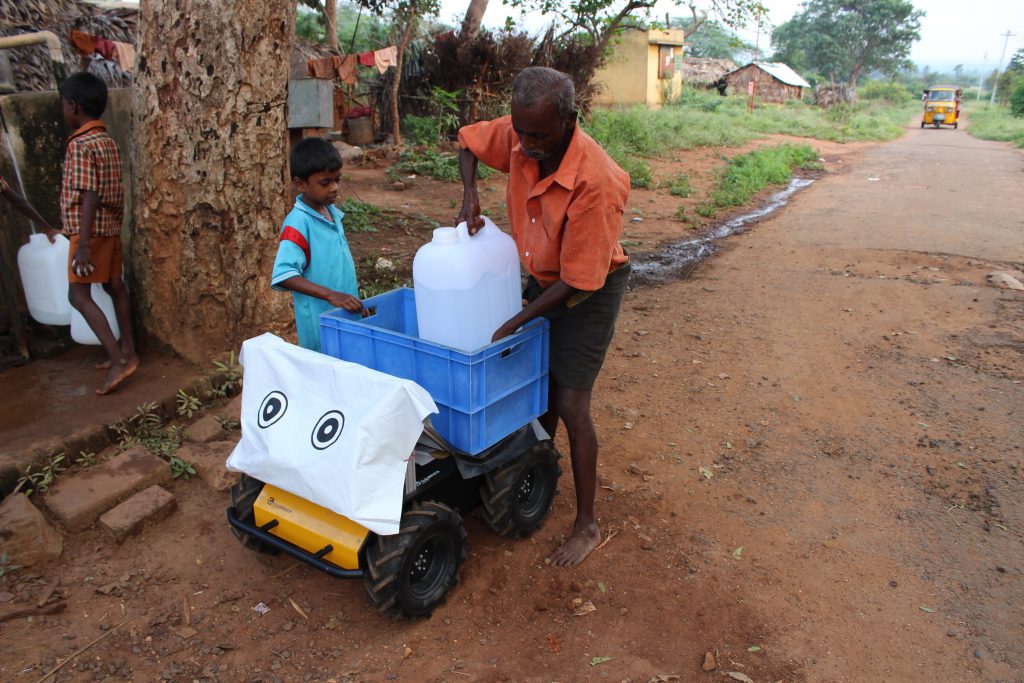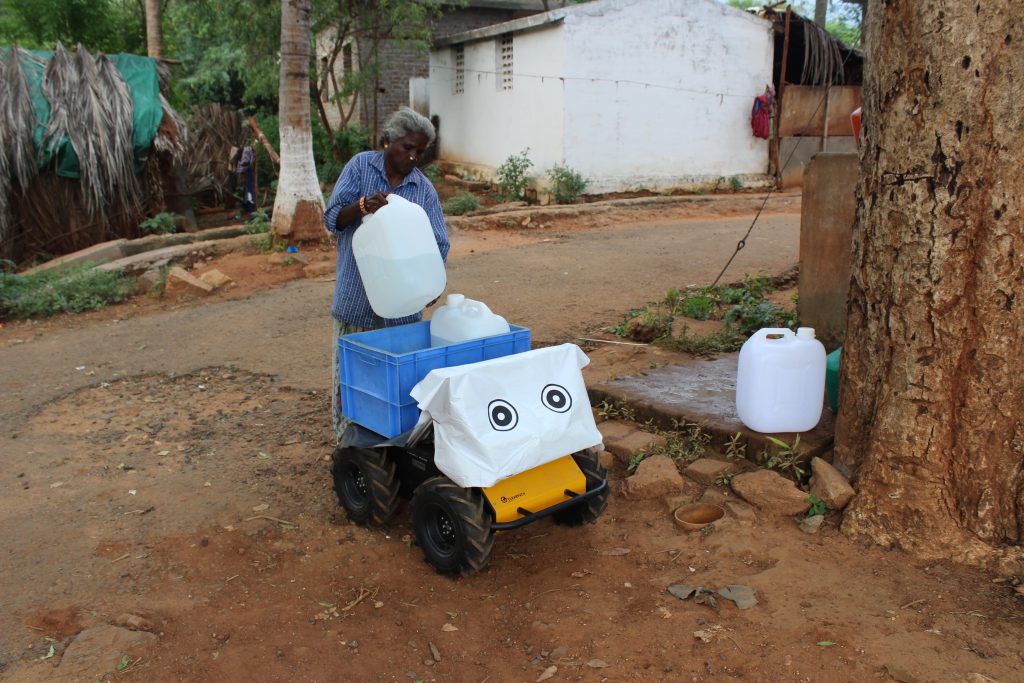Meeting a robot for the first time: A water-carrying robot in rural India
How a robot can make water harvesting easier in India’s remote villages.
By Elizabeth Thomsen
Dr Amol Deshmukh has worked on human-robot interactions for many years, but lately he’s been feeling a bit frustrated. He felt like all the research was “happening for people who already have a pretty good life” – people in developed, urban areas. He wanted to do some research which would “impact life in a more significant way”.
For many robot scientists, testing robots ‘in the wild’ means anywhere outside their laboratories. Most research on human-robot interactions happens in laboratories with a very non-representative sample set: students. And outside of that setting, research occurs in urban settings in developed countries.
A chance encounter at a conference led to a collaboration between Dr Deshmukh and Amrita University, Kerala, India. They decided to test robots in rural India, to see how people would respond to robots helping them in the everyday task of fetching water. Before this research, nobody had tested a robot in an environment like rural India.
“Half the population of India does not have access to tap water.”

A heavy task
Half the population of India does not have access to tap water. This means that many people, particularly women, spend roughly five hours a day carrying water to their houses. This strenuous chore has many impacts: it can lead to health problems from the heavy weights, and takes time away from other tasks such as earning an income, childcare, and for young women, getting an education.
The researchers travelled to Ayyampathy, a small village in southern India with around 200 inhabitants in 25 houses. One of the first challenges they encountered was recruiting volunteers. Most of the water carriers in the village are women who were reluctant to talk to the male researchers. The scientists then recruited a female researcher, and from then on the communication between the villagers and the scientists was much smoother.
The eleven volunteers used a four-wheeled device from Clearpath Robotics known as a Husky. The Husky was remotely-controlled by a researcher walking several metres it, could carry three 20 litre water bottles at a time, and communicated using a synthetic male voice.
“The feedback was overwhelmingly positive: all said the robot made their life easier, and they enjoyed working with it.”
The robot asked the volunteers to place the water bottles on its top and show it the way to their homes. It then asked the volunteers to decant the water into their own vessels, before finishing with a hygiene message reminding them to wash their hands before eating. If necessary, the process was then repeated until the volunteers had collected enough water for their household.

Responses to a robot
After several days the volunteers were surveyed about their experience with the robot. The feedback was overwhelmingly positive: all said the robot made their life easier, and they enjoyed working with it. They were also unanimous that the robot was alive, despite understanding that the robot was controlled by a researcher.
One of the unexpected results of the survey was that more than a third of the volunteers said that the robot was female, despite it having a male voice. According to a volunteer this was because “it is a woman’s job to carry water.” Only one volunteer thought the robot was male, with the remaining volunteers not knowing what gender it was, or saying it didn’t have one. This is perhaps the first report of the gender perception of a robot being biased by attitudes about who performs a task.
“Another thing that is unique about this study is it is making an effort to understand the challenges of introducing robotic solutions in a real life rural setting. This is an essential step towards informing design decisions for robotic products that seek to address the populations at the bottom of the economic pyramid,” says Akshay Nagarajan from Amrita University.
This research was funded by Scottish Informatics and Computer Science Alliance (SICSA) and Amrita University, Kerala, India. Amrita University and its parent NGO, led by world renowned humanitarian Amma who is popularly known as the hugging saint, carry out community development activities in over 142 villages all over India. Researchers from its robotics and women empowerment research centre called Ammachi labs spend a significant amount of time with rural and tribal communities in order to understand their issues and nuances that are not often considered in technology design for such communities.

The researchers are now keen to continue this work and find collaborators. They would like to explore other ideas where social robots may help communities, understand the logistical challenges associated with introducing technology to rural environments, and study the impacts of robots on daily life.
Photo credits: Dr Amol Deshmukh
